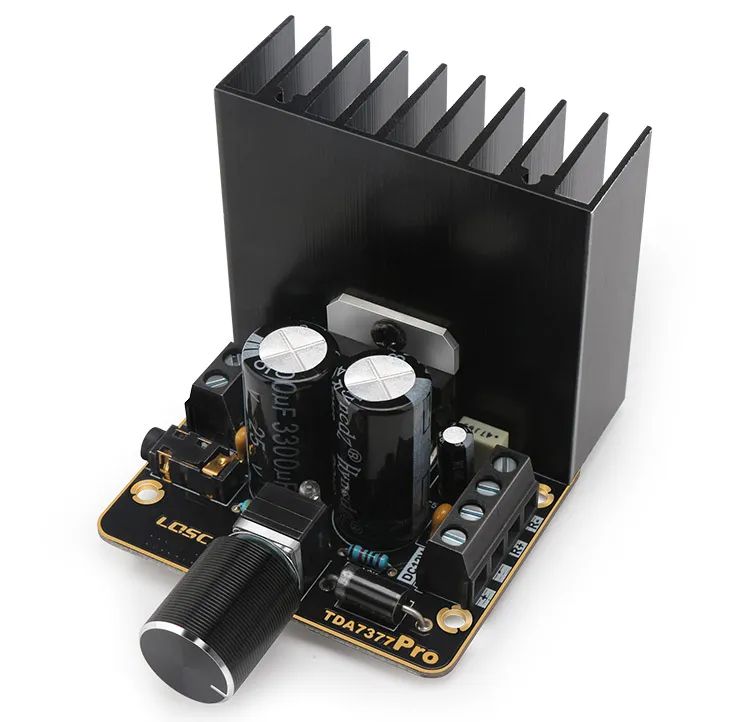在下面的代码示例中,将给出两种最为常用的Redis命令操作方式,既普通调用方式和基于管线的调用方式。
注:在阅读代码时请留意注释。

1 #include <stdio.h>2 #include <stdlib.h>3 #include <stddef.h>4 #include <stdarg.h>5 #include <string.h>6 #include <assert.h>7 #include <hiredis.h>8 9 void doTest()10 {11 int timeout = 10000;12 struct timeval tv;13 tv.tv_sec = timeout / 1000;14 tv.tv_usec = timeout * 1000;15 //以带有超时的方式链接Redis服务器,同时获取与Redis连接的上下文对象。16 //该对象将用于其后所有与Redis操作的函数。17 redisContext* c = redisConnectWithTimeout("192.168.149.137",6379,tv);18 if (c->err) {19 redisFree(c);20 return;21 }22 const char* command1 = "set stest1 value1";23 redisReply* r = (redisReply*)redisCommand(c,command1);24 //需要注意的是,如果返回的对象是NULL,则表示客户端和服务器之间出现严重错误,必须重新链接。25 //这里只是举例说明,简便起见,后面的命令就不再做这样的判断了。26 if (NULL == r) {27 redisFree(c);28 return;29 }30 //不同的Redis命令返回的数据类型不同,在获取之前需要先判断它的实际类型。31 //至于各种命令的返回值信息,可以参考Redis的官方文档,或者查看该系列博客的前几篇32 //有关Redis各种数据类型的博客。:)33 //字符串类型的set命令的返回值的类型是REDIS_REPLY_STATUS,然后只有当返回信息是"OK"34 //时,才表示该命令执行成功。后面的例子以此类推,就不再过多赘述了。35 if (!(r->type == REDIS_REPLY_STATUS && strcasecmp(r->str,"OK") == 0)) {36 printf("Failed to execute command[%s].\n",command1);37 freeReplyObject(r);38 redisFree(c);39 return;40 }41 //由于后面重复使用该变量,所以需要提前释放,否则内存泄漏。42 freeReplyObject(r);43 printf("Succeed to execute command[%s].\n",command1);44 45 const char* command2 = "strlen stest1";46 r = (redisReply*)redisCommand(c,command2);47 if (r->type != REDIS_REPLY_INTEGER) {48 printf("Failed to execute command[%s].\n",command2);49 freeReplyObject(r);50 redisFree(c);51 return;52 }53 int length = r->integer;54 freeReplyObject(r);55 printf("The length of 'stest1' is %d.\n",length);56 printf("Succeed to execute command[%s].\n",command2);57 58 const char* command3 = "get stest1";59 r = (redisReply*)redisCommand(c,command3);60 if (r->type != REDIS_REPLY_STRING) {61 printf("Failed to execute command[%s].\n",command3);62 freeReplyObject(r);63 redisFree(c);64 return;65 }66 printf("The value of 'stest1' is %s.\n",r->str);67 freeReplyObject(r);68 printf("Succeed to execute command[%s].\n",command3);69 70 const char* command4 = "get stest2";71 r = (redisReply*)redisCommand(c,command4);72 //这里需要先说明一下,由于stest2键并不存在,因此Redis会返回空结果,这里只是为了演示。73 if (r->type != REDIS_REPLY_NIL) {74 printf("Failed to execute command[%s].\n",command4);75 freeReplyObject(r);76 redisFree(c);77 return;78 }79 freeReplyObject(r);80 printf("Succeed to execute command[%s].\n",command4);81 82 const char* command5 = "mget stest1 stest2";83 r = (redisReply*)redisCommand(c,command5);84 //不论stest2存在与否,Redis都会给出结果,只是第二个值为nil。85 //由于有多个值返回,因为返回应答的类型是数组类型。86 if (r->type != REDIS_REPLY_ARRAY) {87 printf("Failed to execute command[%s].\n",command5);88 freeReplyObject(r);89 redisFree(c);90 //r->elements表示子元素的数量,不管请求的key是否存在,该值都等于请求是键的数量。91 assert(2 == r->elements);92 return;93 }94 for (int i = 0; i < r->elements; ++i) {95 redisReply* childReply = r->element[i];96 //之前已经介绍过,get命令返回的数据类型是string。97 //对于不存在key的返回值,其类型为REDIS_REPLY_NIL。98 if (childReply->type == REDIS_REPLY_STRING)99 printf("The value is %s.\n",childReply->str);
100 }
101 //对于每一个子应答,无需使用者单独释放,只需释放最外部的redisReply即可。
102 freeReplyObject(r);
103 printf("Succeed to execute command[%s].\n",command5);
104
105 printf("Begin to test pipeline.\n");
106 //该命令只是将待发送的命令写入到上下文对象的输出缓冲区中,直到调用后面的
107 //redisGetReply命令才会批量将缓冲区中的命令写出到Redis服务器。这样可以
108 //有效的减少客户端与服务器之间的同步等候时间,以及网络IO引起的延迟。
109 //至于管线的具体性能优势,可以考虑该系列博客中的管线主题。
110 if (REDIS_OK != redisAppendCommand(c,command1)
111 || REDIS_OK != redisAppendCommand(c,command2)
112 || REDIS_OK != redisAppendCommand(c,command3)
113 || REDIS_OK != redisAppendCommand(c,command4)
114 || REDIS_OK != redisAppendCommand(c,command5)) {
115 redisFree(c);
116 return;
117 }
118
119 redisReply* reply = NULL;
120 //对pipeline返回结果的处理方式,和前面代码的处理方式完全一直,这里就不再重复给出了。
121 if (REDIS_OK != redisGetReply(c,(void**)&reply)) {
122 printf("Failed to execute command[%s] with Pipeline.\n",command1);
123 freeReplyObject(reply);
124 redisFree(c);
125 }
126 freeReplyObject(reply);
127 printf("Succeed to execute command[%s] with Pipeline.\n",command1);
128
129 if (REDIS_OK != redisGetReply(c,(void**)&reply)) {
130 printf("Failed to execute command[%s] with Pipeline.\n",command2);
131 freeReplyObject(reply);
132 redisFree(c);
133 }
134 freeReplyObject(reply);
135 printf("Succeed to execute command[%s] with Pipeline.\n",command2);
136
137 if (REDIS_OK != redisGetReply(c,(void**)&reply)) {
138 printf("Failed to execute command[%s] with Pipeline.\n",command3);
139 freeReplyObject(reply);
140 redisFree(c);
141 }
142 freeReplyObject(reply);
143 printf("Succeed to execute command[%s] with Pipeline.\n",command3);
144
145 if (REDIS_OK != redisGetReply(c,(void**)&reply)) {
146 printf("Failed to execute command[%s] with Pipeline.\n",command4);
147 freeReplyObject(reply);
148 redisFree(c);
149 }
150 freeReplyObject(reply);
151 printf("Succeed to execute command[%s] with Pipeline.\n",command4);
152
153 if (REDIS_OK != redisGetReply(c,(void**)&reply)) {
154 printf("Failed to execute command[%s] with Pipeline.\n",command5);
155 freeReplyObject(reply);
156 redisFree(c);
157 }
158 freeReplyObject(reply);
159 printf("Succeed to execute command[%s] with Pipeline.\n",command5);
160 //由于所有通过pipeline提交的命令结果均已为返回,如果此时继续调用redisGetReply,
161 //将会导致该函数阻塞并挂起当前线程,直到有新的通过管线提交的命令结果返回。
162 //最后不要忘记在退出前释放当前连接的上下文对象。
163 redisFree(c);
164 return;
165 }
166
167 int main()
168 {
169 doTest();
170 return 0;
171 }
172
173 //输出结果如下:
174 //Succeed to execute command[set stest1 value1].
175 //The length of 'stest1' is 6.
176 //Succeed to execute command[strlen stest1].
177 //The value of 'stest1' is value1.
178 //Succeed to execute command[get stest1].
179 //Succeed to execute command[get stest2].
180 //The value is value1.
181 //Succeed to execute command[mget stest1 stest2].
182 //Begin to test pipeline.
183 //Succeed to execute command[set stest1 value1] with Pipeline.
184 //Succeed to execute command[strlen stest1] with Pipeline.
185 //Succeed to execute command[get stest1] with Pipeline.
186 //Succeed to execute command[get stest2] with Pipeline.
187 //Succeed to execute command[mget stest1 stest2] with Pipeline.



![[转]音箱摆放位置](http://www.zhaolu.com/knowhow/yxbw/7.gif)
